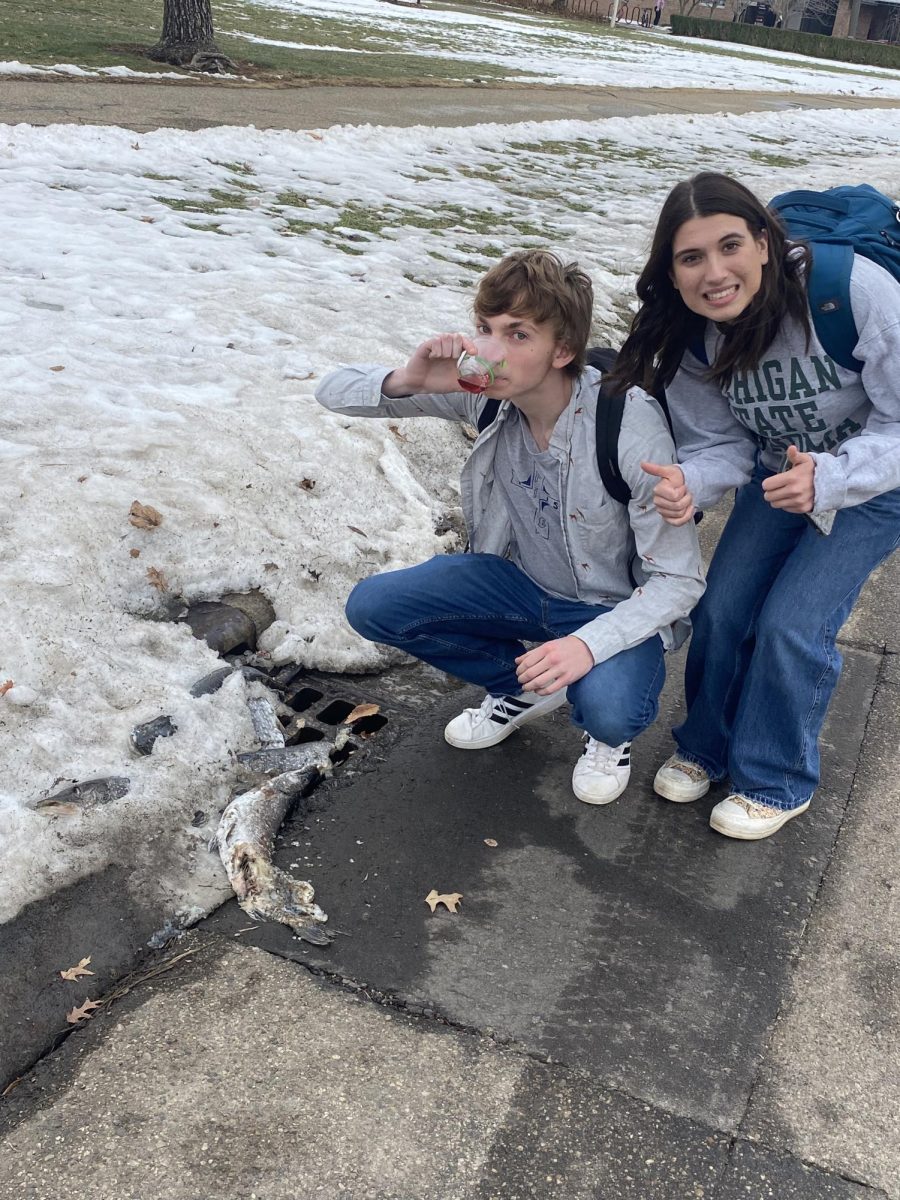Perhaps more than any other, the noise of loose salt underfoot defines the soundscape of the winter season at Calvin. The campus’ many paths are, by their very nature, a sort of in-between place. While sprinting to an 8am or hustling for a seat in the dining halls, we rarely think about how the paths stay clear and safe in the winter.
The answers? Shoveling and salting. While larger plow trucks and tractors can clear parking lots and roadways, manual snow-clearing is still necessary for smaller paths. After snow is cleared, many areas still need to be de-iced.
Marc Rozendal is a junior and a member of the student winter grounds maintenance team. On mornings when it snows, Rozendal and a team of about eight other students gather at the grounds building at 6:00 am. “I usually get up at 5:30, grab my boots and coat, head over to the building, and then, depending on who’s all there, we split into groups, and then we go and shovel,” Rozendal said.
Student shovelers split into groups of three or four and fan out to cover all areas of campus. “I’m usually on the K.E. group, so there’s three or four of us, and, yeah, we just go K.E. and shovel and throw salt down,” Rozendal said.
However, shoveling is not always sufficient for clearing the products of Michigan’s winter skies. Salting is also often required to eliminate ice in intersections and walkways, which works to melt ice through a process called freezing point depression. As salt mixes with the water that ice is made of, the freezing point of the mixture drops, enabling the ice to melt at below-freezing temperatures. As temperatures get colder and colder, the resulting water needs to be saltier to stay liquid — something campus experienced during the first week of classes this spring, when sub-10-degree temperatures did not allow salt to work its usual ice-melting magic.
Across the country, salt is used as a cheap solution to the dangers of icy winter surfaces. In 2023, even with a historically warm winter, the State of Michigan used approximately 470,000 tons of salt to clear the state’s main roadways.
Salting isn’t a perfect solution, however. Even low levels of salt can have a significant impact on groundwater chemistry, according to documents provided to Chimes by Douglas Vander Griend, professor of chemistry.
Extreme levels of salting can damage trees and other plants. Bob Speelman, landscape operations supervisor, is a certified arborist who loves trees so much that the campus arboretum is named after him. Because the grounds team keeps salt usage “as minimal as possible,” Speelman told Chimes that winter maintenance operations don’t have a negative effect on Calvin’s trees at the salt concentrations used.
Braden Gilmore, a junior, has been a part of the student grounds team since freshman year. In the fall and the spring, Gilmore helps clearing leaves and planting flowerbeds. In the winter, work is more sporadic. On average, Gilmore said, the student shovelers go out once or twice a week.
“I’m glad that I jumped in really quickly,” Gilmore said. “The longer you work there, the more people will trust you to take care of things by yourself.”
Speelman is impressed by his team’s dedication. “Any time it snows, we work. If it snows on the weekend, we’ll drop everything we’re doing personally and professionally,” Speelman said.
Gilmore appreciates knowing his work has an impact. “I have a professor who broke her leg slipping on some ice. It’s cool to be able to know that there are ways to avoid that type of thing happening.”
Working for the grounds crew has also given both Rozendal and Gilmore a lot of respect for the work Calvin’s grounds workers do behind the scenes. In the winter, Calvin’s professional grounds staff drive the plows that clear parking lots and roadways. “These guys put in a lot of work and they have to get up early and be out in the cold … just so that we can wake up and not have to worry about falling on ice or not being able to drive,” Rozendal said.














